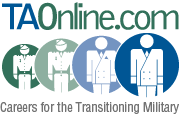Title:Find Your Inside Track to a New Job
Author:Susan P. Joyce, © 2015 All rights reserved
Date:November 2015
Source:workcoachcafe.com
If you are a job seeker with a few years (or a few decades) of experience, you have many advantages over younger or less experienced job seekers. You have knowledge, skills, and experience plus many accomplishments.
But you may not recognize or value what may be your biggest advantage: your network of former colleagues!
People you have known and worked with in your career can be your "inside track" to your next job.
Time to leverage that advantage — take that inside track to your next job!
The Inside Track: Your "Corporate Alumni" Network
Corporate alumni are the people who formerly worked for a specific employer. They are "alumni" of that employer like school graduates are alumni of their schools.
Think back to the employers where you have worked in your career. Connecting with a former boss, co-worker, subordinate, or just another former employee with whom you may or may not have worked could be your connection to a new job.
Consider the possibilities:
- Some of your fellow corporate alumni may now work for one of your target employers.
- Some may enjoy working for an employer you have never considered, but which could be a good place for you to work, too.
- Some may still be working for that former employer (and that former employer might be a good place for you to work, again).
Reach out to them. They can become a quick route to either becoming a "boomerang" or being referred to a new employer by an employee. (More on boomerangs below.)
This group may be much larger, more well-connected, and more useful than your school alumni network.
Connecting with other people who worked at the same employer you did is much easier now, and, even if you didn't work with them or know them while you were employed there, you still have much in common and can extend the reach and power of your network.
Most likely, there is a LinkedIn Group. Just search on the name of a former employer plus the word "alumni" — like "Hewlett Packard Alumni" if you worked for Hewlett Packard — in Google and LinkedIn.
How to Reconnect with Your Corporate Alumni Network
Think of all the people you have met in your life whom you have liked and/or respected. Those people are the effective core of your network.
Have you lost track of some — or many — of them? Reach out to the people you have not been in contact with the last few years.
Then, spend some time finding those you have lost touch with. Instead of going to a job board and hitting the "Apply" button a few times, go to Google and search on those names. Or, go directly to LinkedIn to do those searches.
Where do those people live and, more importantly, work now. Are those places you want to work?
-
Use LinkedIn to Reconnect
If you don't already belong to LinkedIn, join, complete your Profile, and connect with at least 50 people. Then...
-
Advanced People Search
Type the name of a company where you have worked into the "Company Name" field (which also works for nonprofits, colleges, government agencies, etc.). Select "Current or Past," and click on the "Search" button.
Look for the names of familiar people (the more LinkedIn connections you have, the more names you will see), and check the "Contact info" tab on their LinkedIn Profiles for their email address, website(s), and phone numbers.
-
LinkedIn Groups
Over 2 million LinkedIn Groups exist, and you'll find them for almost any topic — professions, industries, locations, hobbies, other interests, and a combination of topics (like
Using the main search bar at the top of most LinkedIn pages, select "Groups" from the small gray lined box sitting at the left of the search bar, and type in your query.
-
Advanced People Search
-
Use Google
Google, or your favorite search engine, can be a big help as usual.
- Google the names of the people you have worked with in the past to see if you can find them now. Often you will find multiple entries on Facebook to check out and, of course, LinkedIn will be listed, too.
- Google the name of a former employer's organization (company, nonprofit, etc.). Some employers have a page in their website for corporate alumni. If you find one, it can be a great way to reconnect with former colleagues.
Typically, an employer who has a corporate alumni page is an employer who values former employees and, often, welcomes "boomerangs" (see below for more information about boomerangs).
Using the Inside Track
Once you have found the people, send them an email or give them a call to learn what has happened since you last had a chance to talk. Ask about family, friends, and life in general. See what and how they are doing now.
Then, ask about their jobs, and how they like where they work. Would they recommend that employer for you?
-
Connect with Employee Referrals
For most employers, employee referral is the preferred method of finding and hiring new employees. Referred job seekers are cheaper to hire, stay longer, and perform better than non-referred employees. In addition, the employee making the referral is usually rewarded by the grateful employer. So everyone wins in this situation!
Think of the advantages you will have if you are hired through a referral! Instead of walking into a new organization knowing no one and having no allies, you will already have someone "on the inside." Your ally can help you understand how things work, who to work with (and who to avoid), and what will help you succeed in that organization. Read Express Lane to a New Job and To Be Hired, Be Referred for more information.
-
Consider Becoming a "Boomerang" Employee
If you would be happy to work for a former employer again, look for current employees you may know. Many employers like to re-hire former employees. There's even a term for people who are re-hired: "boomerangs."
While some organizations resist re-hiring someone who was "disloyal" enough to quit, re-hiring a former employee often works out well for both employer and employee. The employee often still has a network inside the organization plus knowledge about processes, products, and services that don't need to be learned, although updates may be needed, depending on how long it's been since you worked there.
For the employer, you are a "known quantity." Not only are you familiar with the organization and its work, current employees know you and, hopefully, will vouch for your knowledge and accomplishments and help you re-enter the organization.
So, a boomerang often becomes productive more quickly than a new employee.
To connect, reach out to former co-workers who might still be there (if you wouldn't mind working for/with them again). As usual, LinkedIn is often useful for this.
Also, check with HR to see if there is a special process for re-hiring former employees who are considering returning. Not every organization is smart enough or willing to re-hire someone, but many very well-known, high quality companies do. To find out, ask.
Also check the employer's website. As noted above, if the employer offers "corporate alumni" events and networking, chances are very good that boomerangs are welcome.
More About Older Worker Advantages

